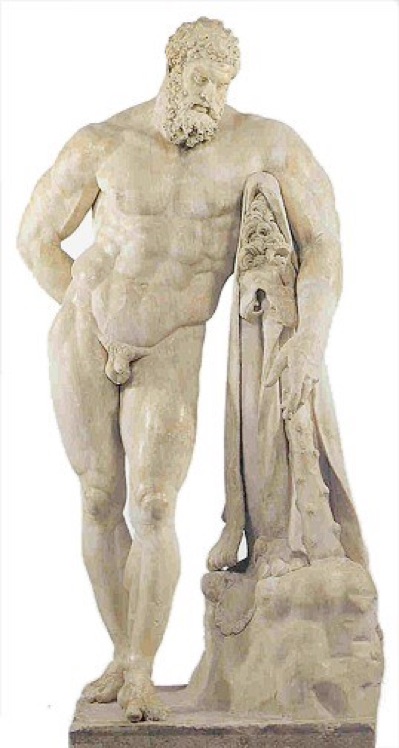Archaeological tours, packages and exclusive multy day excursions in Campania for tourists, lovers,
scholars and students.





Archaeological tours, packages and exclusive multy day excursions in Campania for tourists, lovers,
scholars and students.
The marble statue dating from the III century A.D. carved by the greek sculptor Glykon whose signature had been found at the bottom of the statue, it is the copy of a original bronze by Lysippus dating back the IV century b.C., and depicts Hercules, the greek hero, at rest after his last feat in the garden of the Hesperides. The discovery occurred in 1546, as documented by some sketches by Antonio Sangallo, in the tepidarium of the Baths of Caracalla in Rome, when Paolo III Farnese began new excavations with the aim to find materials to enrich the nascent Farnesian collection.
At the time of the discovery showed no legs, supplemented by Guglielmo della Porta, and left forearm reconstructed in plaster. The original legs were reinstated by Charles Albacini in 1787 and the statue was transferred to Naples in the then Museum of the Royal University, now the National Archaeological Museum. A twin statue, called the Latin Hercules, is preserved in the Royal Palace at Caserta and a plaster copy is located inside the underground station of Naples called "Museum".

FARNESE HERCULES
Pompeii Tour guide - Herculaneum Tour guide - Stabiae Tour guide - Oplontis Tour guide - Naples Tour guide
Amalfi Coast - Sorrento - Positano - Paestum Tour guide - Capua Amphitheater - Procida - Ischia - Capri
Copyright © Pompeiin.com - E-mail: info@pompeiin.com

